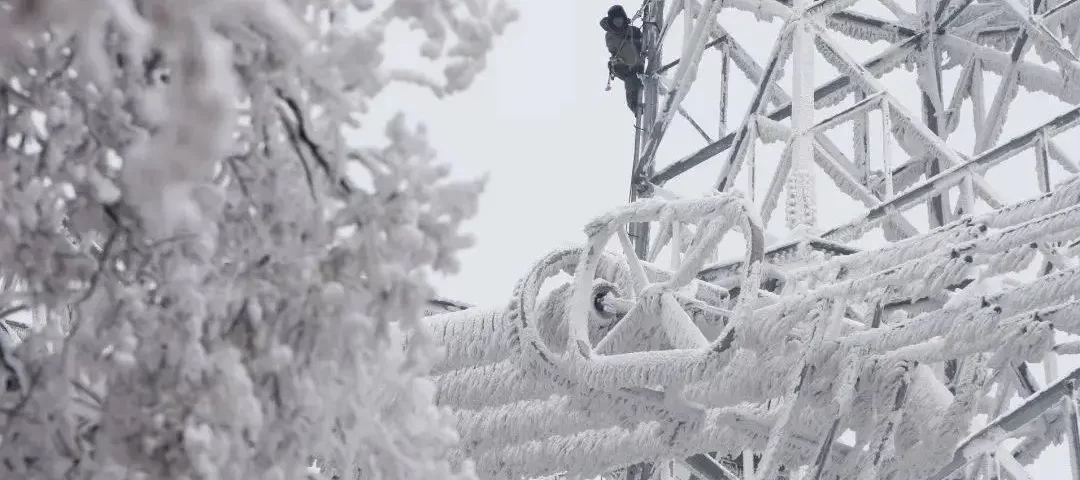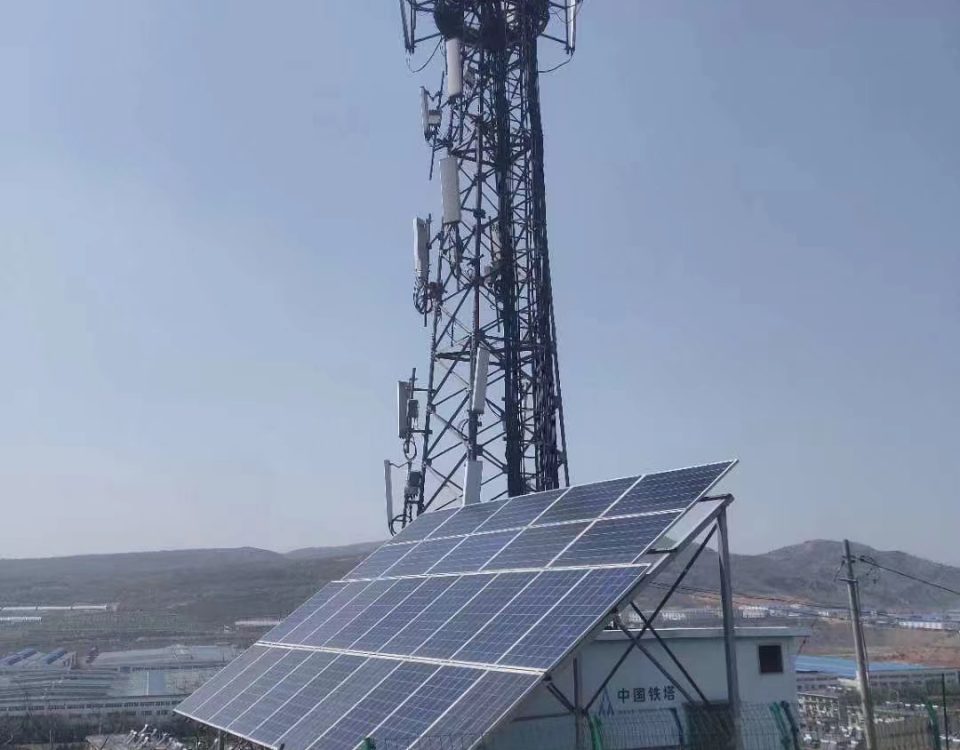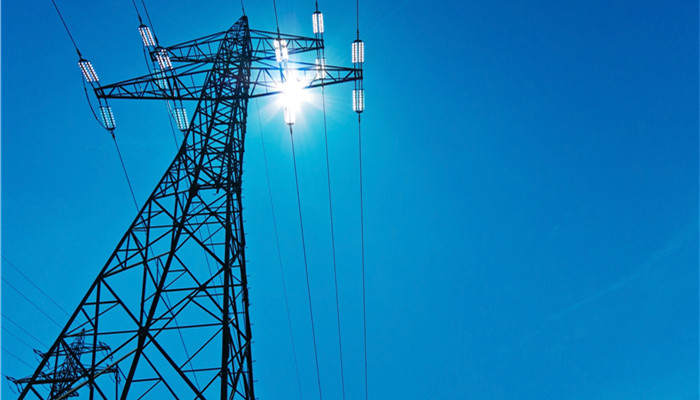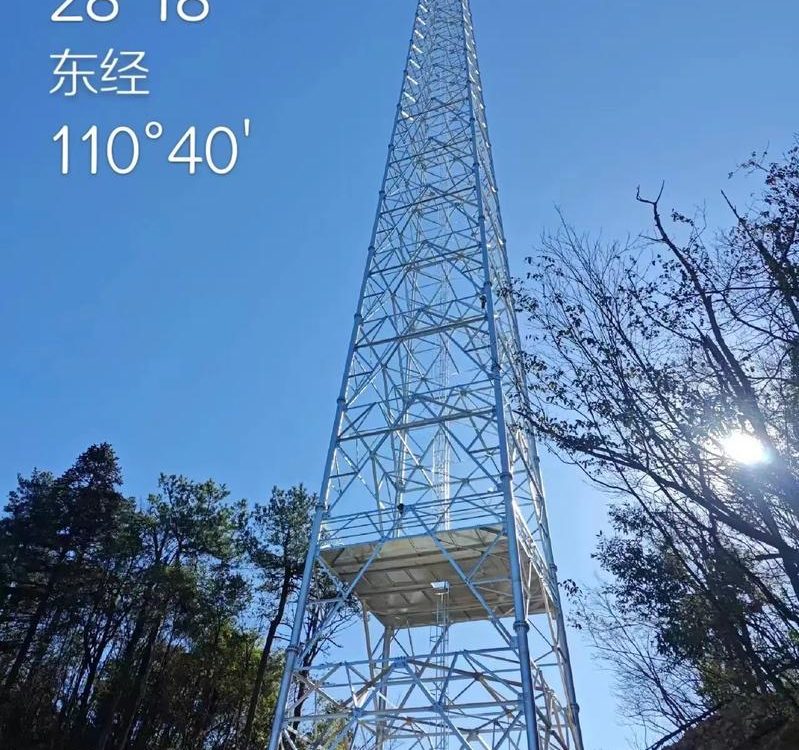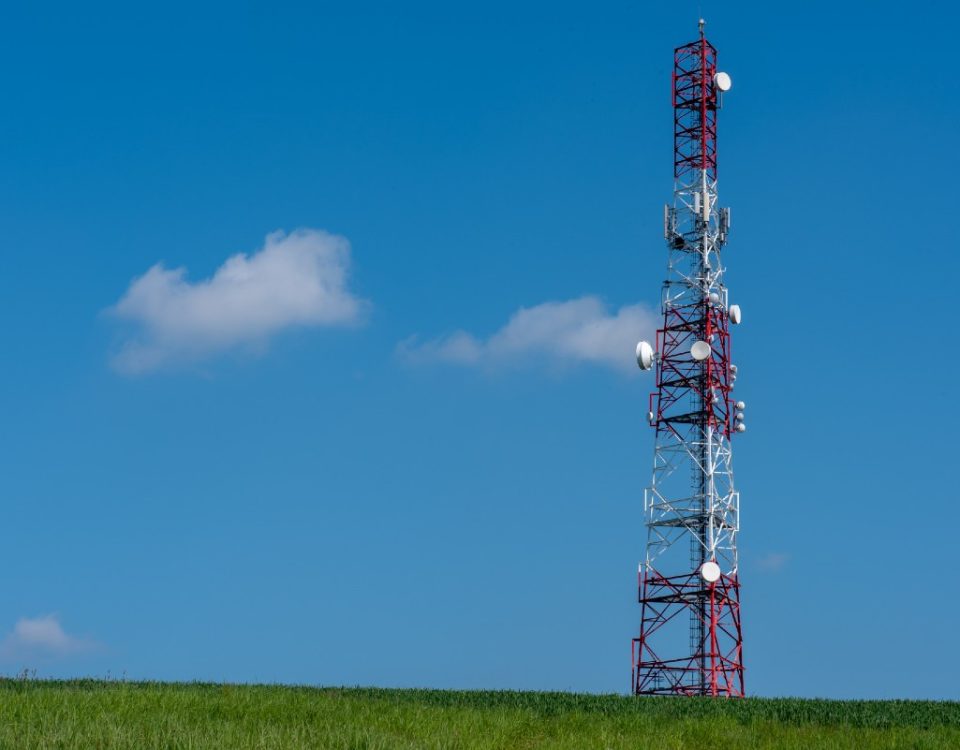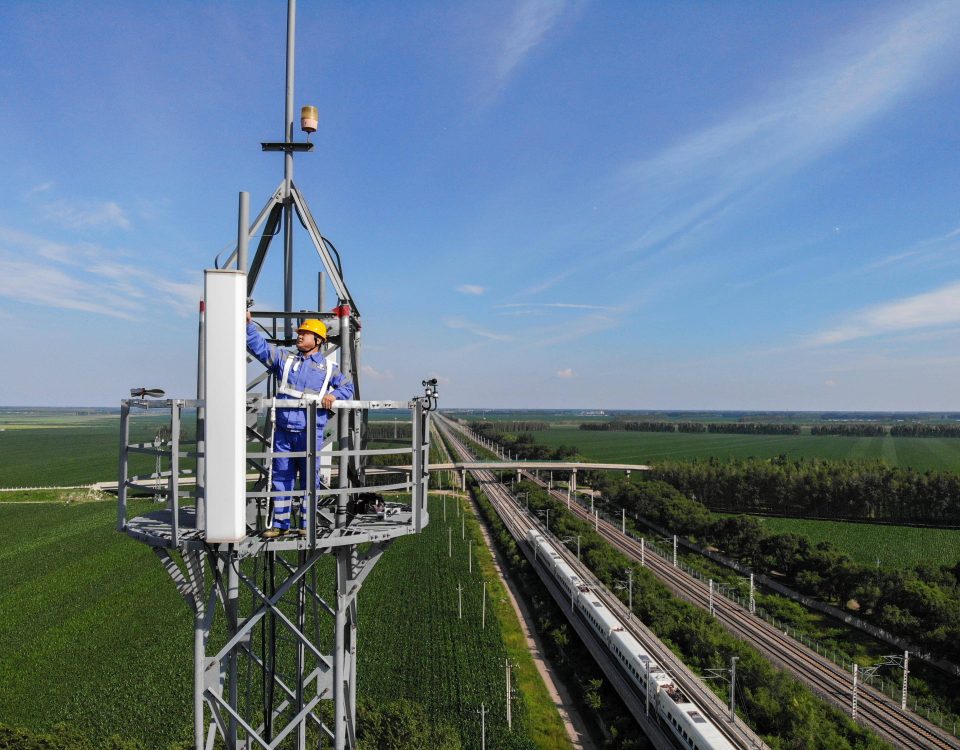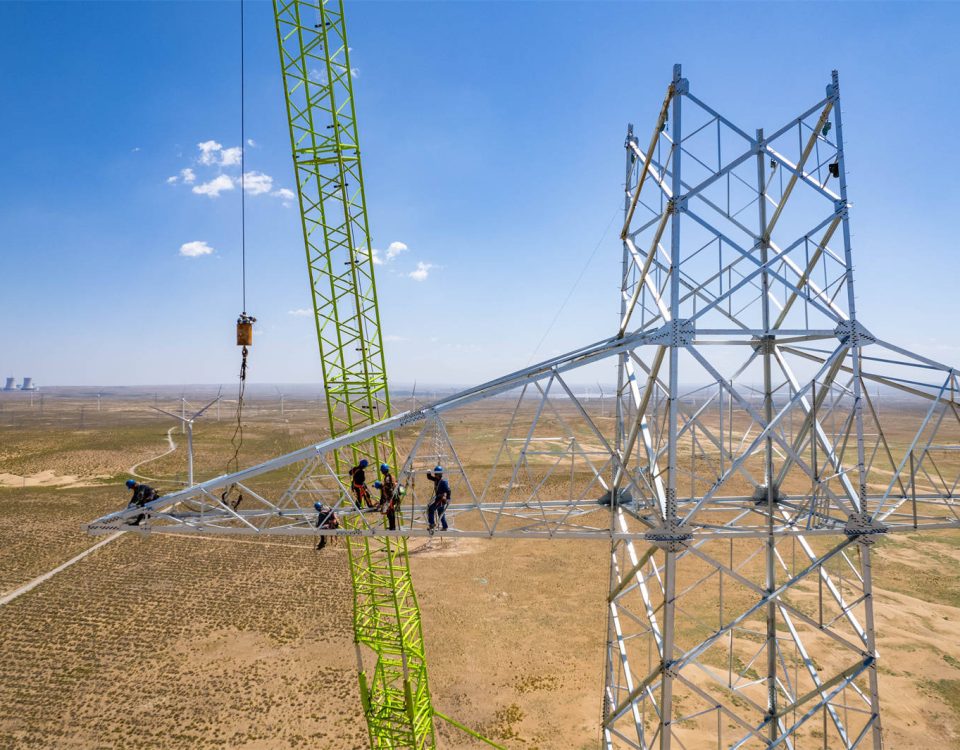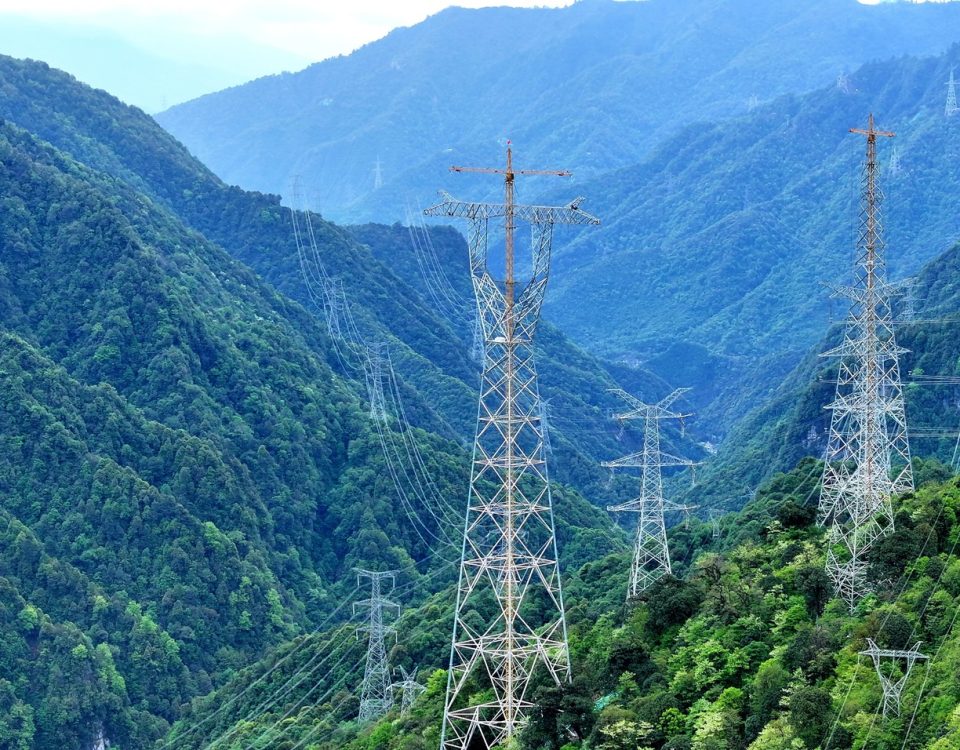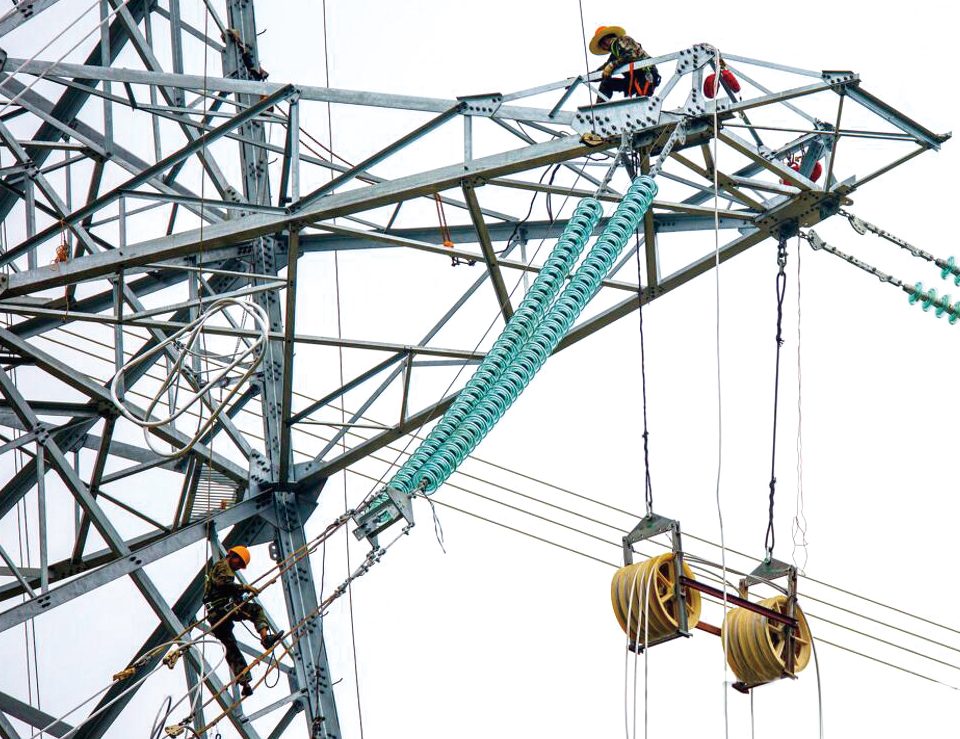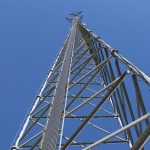
Self-Supporting, Conductor, and Guyed Towers – Theoretical Analysis and Experimental Study
May 3, 2025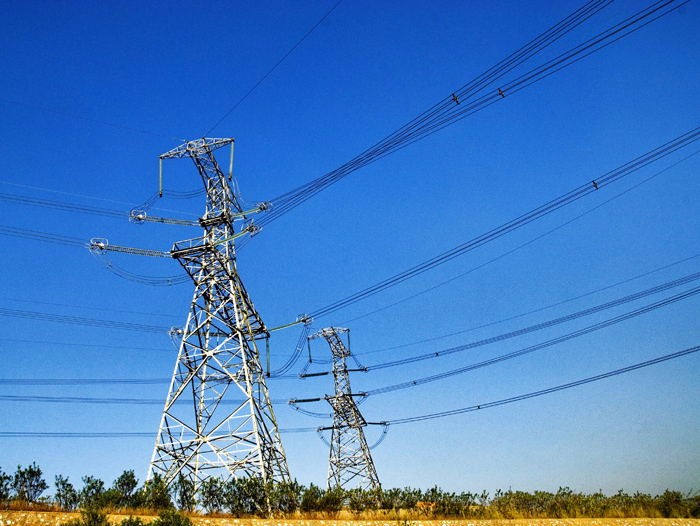
220 kV Galvanized Lattice Steel Structure Tower Project | Schedules of Rates and Prices
May 15, 2025Strength Maintenance of High-Voltage Transmission Towers in Ice-Covered Conditions
Strength Maintenance of High-Voltage Transmission Towers in Ice-Covered Conditions: Mechanical Analysis, Parameter Comparison, and Manufacturing Process Study
High-voltage transmission towers are critical infrastructure components that must maintain structural integrity under harsh environmental conditions, such as ice accretion on conductors and tower members. Ice-covered conditions introduce significant additional loads, including vertical ice weight, wind loads on ice-coated surfaces, and dynamic effects from ice shedding or galloping. This document provides a comprehensive analysis of how transmission towers maintain strength in ice-covered environments, incorporating mechanical analysis, parameter comparisons, scientific formulas, and insights into anti-icing tower manufacturing processes.
1. Mechanical Analysis of Transmission Towers in Ice-Covered Conditions
Transmission towers in ice-covered environments face complex loading scenarios that challenge their structural stability. The primary mechanical considerations include:
- Ice Load: Ice accretion on conductors and tower members adds vertical and lateral loads.
- Wind Load: Ice increases the surface area exposed to wind, amplifying drag forces.
- Dynamic Loads: Ice shedding or conductor galloping induces dynamic vibrations.
- Thermal Effects: Cold temperatures alter material properties, such as steel’s ductility.
1.1 Ice Load Calculation
The ice load on a conductor or tower member can be modeled as a uniformly distributed load. The weight of ice per unit length is calculated using:
Where:
- \( W_{\text{ice}} \): Ice load per unit length (N/m)
- \( \rho_{\text{ice}} \): Ice density (typically 900 kg/m³ for glaze ice)
- \( t_{\text{ice}} \): Ice thickness (m)
- \( D \): Diameter of the conductor or member (m)
For a conductor with \( D = 0.03 \, \text{m} \) and \( t_{\text{ice}} = 0.03 \, \text{m} \):
1.2 Wind Load on Ice-Covered Conductors
Wind load on ice-covered conductors is calculated using:
Where:
- \( F_{\text{wind}} \): Wind force (N)
- \( \rho_{\text{air}} \): Air density (1.225 kg/m³ at sea level)
- \( C_d \): Drag coefficient (typically 1.0 for cylindrical shapes)
- \( V \): Wind speed (m/s)
- \( L \): Length of the conductor or member (m)
For \( V = 30 \, \text{m/s} \), \( D = 0.03 \, \text{m} \), \( t_{\text{ice}} = 0.03 \, \text{m} \), and \( L = 1 \, \text{m} \):
1.3 Buckling Analysis
The critical buckling load for a compression member is given by Euler’s formula:
Where:
- \( P_{\text{cr}} \): Critical buckling load (N)
- \( E \): Young’s modulus of steel (210 GPa)
- \( I \): Moment of inertia (m⁴)
- \( K \): Effective length factor (typically 1.0)
- \( L \): Member length (m)
For a steel angle section with \( I = 1.2 \times 10^{-6} \, \text{m}^4 \), \( L = 2 \, \text{m} \):
1.4 Dynamic Effects from Ice Shedding
Ice shedding introduces dynamic loads modeled as:
Where:
- \( \eta \): Dynamic impact factor (1.5–2.0)
- \( L \): Span length (m)
For a 300 m span with \( W_{\text{ice}} = 5.09 \, \text{N/m} \) and \( \eta = 1.8 \):
2. Parameter Comparison for Strength Maintenance
| Parameter | Standard Design | Ice-Resistant Design | Impact on Strength |
|---|---|---|---|
| Ice Thickness | 10–15 mm | 30–50 mm | Higher ice thickness increases vertical and wind loads, requiring stronger members. |
| Steel Yield Strength | 355 MPa (Q355 steel) | 420 MPa (Q420 steel) | Higher yield strength increases load-bearing capacity by ~18%. |
| Bracing Configuration | Standard X-bracing | Reinforced X-bracing with diaphragms | Diaphragms reduce torsional effects by ~30%. |
| Foundation Type | Standard concrete footing | Hybrid slab foundation | Hybrid foundations improve resistance to ground deformation by ~25%. |
| Galvanization Thickness | 80–100 μm | 120–150 μm | Thicker galvanization extends corrosion resistance, reducing maintenance by ~40%. |
| Member Slenderness Ratio | 150–200 | 100–150 | Lower slenderness ratios increase buckling resistance by ~20%. |
3. Scientific Analysis of Tower Strength Maintenance
- Material Selection: High-strength steels (e.g., Q420) offer ~18% higher load capacity.
- Structural Optimization: Finite element analysis (FEA) predicts failure modes.
- Secondary Members: Braces enhance torsional stiffness.
- Dynamic Mitigation: Dampers reduce dynamic impact by ~20–30%.
- Monitoring Systems: Real-time monitoring detects deformations.
4. Manufacturing Process for Anti-Icing Transmission Towers
- Material Preparation:
- High-Strength Steel: Q420 steel with 420 MPa yield strength.
- Galvanization: 120–150 μm zinc coating via hot-dip process.
- Fabrication:
- Precision Cutting: CNC machines ensure accuracy.
- Welding: Groove welding per standards.
- Assembly: High-strength bolts (Grade-10.9 M30).
- Anti-Icing Design Features:
- Aerodynamic Shaping: Reduces ice accretion.
- Hydrophobic Coatings: Silicone-based coatings reduce ice adhesion.
- Diaphragm Reinforcement: Enhances torsional stiffness.
- Quality Control:
- Non-Destructive Testing: Ultrasonic and magnetic particle testing.
- Load Testing: Full-scale tests verify capacity.
- Coating Inspection: Salt spray tests ensure durability.
- Parameter Optimization:
- Wall Thickness: 12 mm reduces buckling risk by ~25%.
- Bolt Torque: 400–500 Nm minimizes slippage.
- Member Cross-Section: Larger sections increase buckling resistance by ~15–20%.
5. Recent Research and Results
- Full-Scale Testing: 25% increase in deformation resistance with hybrid foundations.
- FEA Simulations: Predicted buckling under 50 mm ice loads.
- Metaheuristic Optimization: Reduced mass by 10–40%.
- Hydrophobic Coatings: Reduced ice adhesion by ~50%.
- SAR Monitoring: Detected deformations in UHV towers.
This document further extends the analysis of high-voltage transmission towers in ice-covered environments, focusing on environmental impact considerations, economic analysis of ice-resistant designs, and global standards and regulatory frameworks. It builds on previous mechanical analyses, anti-icing technologies, case studies, and future trends, maintaining scientific rigor with formulas, parameter comparisons, and data-driven insights.
This document extends the analysis of high-voltage transmission towers in ice-covered environments, focusing on advanced anti-icing technologies, case studies of tower failures, and future trends in ice-resistant tower design. It builds on previous mechanical analyses, parameter comparisons, and manufacturing processes, maintaining scientific rigor with formulas and data-driven insights.
7. Advanced Anti-Icing Technologies
Modern transmission towers incorporate advanced anti-icing technologies to mitigate ice accretion and reduce structural loads. These technologies enhance reliability and reduce maintenance costs in harsh winter conditions.
7.1 Active De-Icing Systems
Active de-icing systems use external energy to remove ice from conductors and tower members. Common methods include:
-
- Thermal De-Icing: Joule heating applies electrical current to conductors, raising their temperature to melt ice. The power required is calculated as:
Where:
-
-
- \( P_{\text{heat}} \): Heating power (W)
- \( I \): Current (A)
- \( R \): Conductor resistance (Ω)
-
For a conductor with \( R = 0.1 \, \Omega/\text{km} \) and \( I = 500 \, \text{A} \):
- Mechanical De-Icing: Robotic devices or vibration systems dislodge ice. Vibration amplitude is designed to exceed ice adhesion strength, typically 0.5–1.0 MPa.
7.2 Passive Anti-Icing Coatings
Passive coatings reduce ice adhesion without external energy. Hydrophobic and superhydrophobic coatings, such as fluoropolymer-based materials, lower ice adhesion strength to ~0.1 MPa. The contact angle (\( \theta \)) of water on these surfaces is modeled as:
Where:
- \( \gamma_{\text{SG}} \): Solid-gas surface tension
- \( \gamma_{\text{SL}} \): Solid-liquid surface tension
- \( \gamma_{\text{LG}} \): Liquid-gas surface tension
Superhydrophobic coatings achieve \( \theta > 150^\circ \), reducing ice accretion by ~60% compared to untreated surfaces.
7.3 Comparison of Anti-Icing Technologies
| Technology | Mechanism | Efficiency | Cost | Maintenance |
|---|---|---|---|---|
| Thermal De-Icing | Joule heating | 80–90% ice removal | High (energy-intensive) | Moderate (system upkeep) |
| Mechanical De-Icing | Vibration/robots | 70–85% ice removal | Moderate | High (mechanical wear) |
| Hydrophobic Coatings | Reduced ice adhesion | 50–60% ice reduction | Low | Low (reapplication every 5–10 years) |
8. Case Studies of Tower Failures and Lessons Learned
Historical tower failures in ice-covered conditions provide critical insights for improving design and maintenance practices.
8.1 2008 South China Ice Storm
The 2008 ice storm in South China caused over 7,000 transmission tower failures due to ice loads exceeding 50 mm. Key findings:
- Underestimated Ice Loads: Design standards assumed 15 mm ice thickness, but actual loads reached 50 mm, increasing vertical loads by ~300%.
- Buckling Failures: Main legs buckled due to high slenderness ratios (>200). Post-disaster designs reduced slenderness to 100–150.
- Lessons Learned: Updated standards now mandate designing for 50 mm ice thickness and incorporating diaphragms for torsional stiffness.
8.2 1998 Quebec Ice Storm
The 1998 Quebec ice storm led to the collapse of 600 towers. Analysis revealed:
-
- Dynamic Loads: Ice shedding caused dynamic loads 2.5 times the static ice weight, calculated as:
For a 400 m span with \( W_{\text{ice}} = 6.0 \, \text{N/m} \):
- Corrosion Damage: Thin galvanization (60 μm) led to corrosion, reducing member strength by ~20%.
- Lessons Learned: Dynamic dampers and thicker galvanization (120–150 μm) were adopted to mitigate vibrations and corrosion.
9. Future Trends in Ice-Resistant Tower Design
Emerging technologies and methodologies are shaping the future of ice-resistant transmission towers.
9.1 Smart Materials
Shape-memory alloys (SMAs) and self-healing coatings are being explored to enhance tower resilience. SMAs can restore deformed members under temperature changes, with a recovery stress of:
Where:
- \( \sigma_{\text{recovery}} \): Recovery stress (MPa)
- \( E_{\text{SMA}} \): Young’s modulus of SMA (50–70 GPa)
- \( \epsilon_{\text{pre}} \): Pre-strain (2–5%)
For \( E_{\text{SMA}} = 60 \, \text{GPa} \) and \( \epsilon_{\text{pre}} = 3\% \):
9.2 AI-Driven Design Optimization
Artificial intelligence (AI) and machine learning (ML) optimize tower designs by predicting ice loads and failure modes. Genetic algorithms reduce tower mass by ~15% while maintaining strength, solving:
Subject to:
Where:
- \( M \): Total mass
- \( \rho \): Material density
- \( A_i, L_i \): Cross-sectional area and length of member \( i \)
- \( \sigma_i \): Stress in member \( i \)
9.3 Modular and Adaptive Designs
Modular towers with adaptive bracing systems adjust stiffness based on real-time load monitoring. These systems use actuators to modify bracing angles, reducing stresses by ~25% under uneven ice loads.
11. Environmental Impact Considerations
The design and operation of ice-resistant transmission towers must balance structural reliability with environmental sustainability. Ice-covered environments often overlap with ecologically sensitive regions, necessitating careful consideration of environmental impacts.
11.1 Carbon Footprint of Tower Manufacturing
The production of high-strength steel and galvanization processes contributes to greenhouse gas emissions. The carbon footprint of steel production can be estimated using:
Where:
- \( E_{\text{CO2}} \): CO₂ emissions (kg)
- \( m_{\text{steel}} \): Mass of steel (kg)
- \( e_{\text{steel}} \): Emission factor for steel production (1.8–2.2 kg CO₂/kg steel, depending on the process)
For a 100-tonne tower using Q420 steel with \( e_{\text{steel}} = 2.0 \, \text{kg CO₂/kg} \):
Mitigation strategies include using recycled steel (reducing \( e_{\text{steel}} \) to ~0.8 kg CO₂/kg) and optimizing tower designs to minimize material use.
11.2 Impact on Local Ecosystems
Tower construction and de-icing operations can affect local flora and fauna. For example, thermal de-icing increases local temperatures, potentially disrupting hibernating species. The temperature rise is modeled as:
Where:
- \( \Delta T \): Temperature rise (°C)
- \( P_{\text{heat}} \): Heating power (W)
- \( h \): Convective heat transfer coefficient (20–50 W/m²·K)
- \( A \): Surface area of the conductor (m²)
For \( P_{\text{heat}} = 25 \, \text{W/m} \), \( h = 30 \, \text{W/m²·K} \), and \( A = 0.1 \, \text{m²/m} \):
This temperature rise can be minimized by using pulsed heating to limit environmental impact.
11.3 Comparison of Environmental Impacts
| Aspect | Standard Design | Ice-Resistant Design | Mitigation Strategy |
|---|---|---|---|
| Carbon Footprint | 180 tonnes CO₂/tower | 200 tonnes CO₂/tower | Use recycled steel, optimize mass |
| Ecosystem Disruption | Moderate (construction) | High (de-icing operations) | Pulsed heating, habitat restoration |
| Material Waste | 5–10% scrap | 3–8% scrap | Precision manufacturing, recycling |
/
12. Economic Analysis of Ice-Resistant Tower Designs
Ice-resistant tower designs involve higher upfront costs but can reduce long-term maintenance and outage expenses. An economic analysis quantifies these trade-offs.
12.1 Cost-Benefit Analysis
The net present value (NPV) of an ice-resistant tower design is calculated as:
Where:
- \( C_{\text{benefits},t} \): Benefits in year \( t \) (e.g., reduced outages, maintenance savings)
- \( C_{\text{costs},t} \): Costs in year \( t \) (e.g., construction, de-icing)
- \( r \): Discount rate (e.g., 5%)
- \( T \): Project lifespan (e.g., 50 years)
For a tower with initial cost of $500,000, annual maintenance savings of $20,000, and outage reduction savings of $50,000/year, over 50 years at \( r = 0.05 \):
Using the annuity formula, the present value of benefits is ~$1,200,000, yielding NPV ≈ $700,000, indicating economic viability.
12.2 Cost Comparison
| Component | Standard Tower ($) | Ice-Resistant Tower ($) | Long-Term Savings ($/50 years) |
|---|---|---|---|
| Construction | 400,000 | 500,000 | – |
| Maintenance | 30,000/year | 10,000/year | 1,000,000 |
| Outage Costs | 100,000/year | 50,000/year | 2,500,000 |
13. Global Standards and Regulatory Frameworks
International standards and regulations ensure the safety and reliability of transmission towers in ice-covered conditions. Compliance with these frameworks is critical for global interoperability and resilience.
13.1 Key Standards
-
- IEC 60826: Specifies design criteria for overhead transmission lines, including ice and wind load combinations. It recommends a safety factor (\( \gamma \)) for ice loads:
Where \( \gamma = 1.5–2.0 \). For \( W_{\text{ice}} = 5.09 \, \text{N/m} \), \( F_{\text{wind}} = 49.61 \, \text{N} \), and \( \gamma = 1.8 \):
- ASCE 74: Provides guidelines for transmission line loads in the U.S., emphasizing dynamic ice shedding effects.
- GB 50545 (China): Mandates designing for 50 mm ice thickness in severe icing regions, post-2008 ice storm.
13.2 Regulatory Compliance Challenges
Compliance challenges include:
- Regional Variability: Ice load assumptions vary (e.g., 15 mm in Europe vs. 50 mm in China), requiring localized designs.
- Cost Implications: Higher safety factors increase construction costs by ~20%.
- Testing Requirements: Full-scale testing for extreme ice loads is resource-intensive.
13.3 Comparison of Global Standards
| Standard | Ice Thickness (mm) | Safety Factor</th < | Dynamic Load Consideration |
|---|---|---|---|
| IEC 60826 | 10–30 | 1.5–2.0 | Moderate |
| ASCE 74 | 15–40 | 1.6–2.2 | High |
| GB 50545 | 30–50 | 1.8–2.5 | High |
6. Conclusion
Maintaining the strength of high-voltage transmission towers in ice-covered conditions requires robust mechanical design, advanced materials, and innovative manufacturing processes. Mechanical analyses, parameter comparisons, and advanced manufacturing ensure reliable operation in harsh environments, securing the stability of power transmission networks.
This further analysis underscores the multifaceted approach required to maintain high-voltage transmission tower strength in ice-covered conditions. Environmental considerations highlight the need for sustainable manufacturing and operation practices, while economic analyses demonstrate the long-term viability of ice-resistant designs. Compliance with global standards ensures safety and interoperability. By integrating these insights with previous mechanical, technological, and design advancements, transmission towers can achieve enhanced resilience, supporting reliable power delivery in extreme environments.

